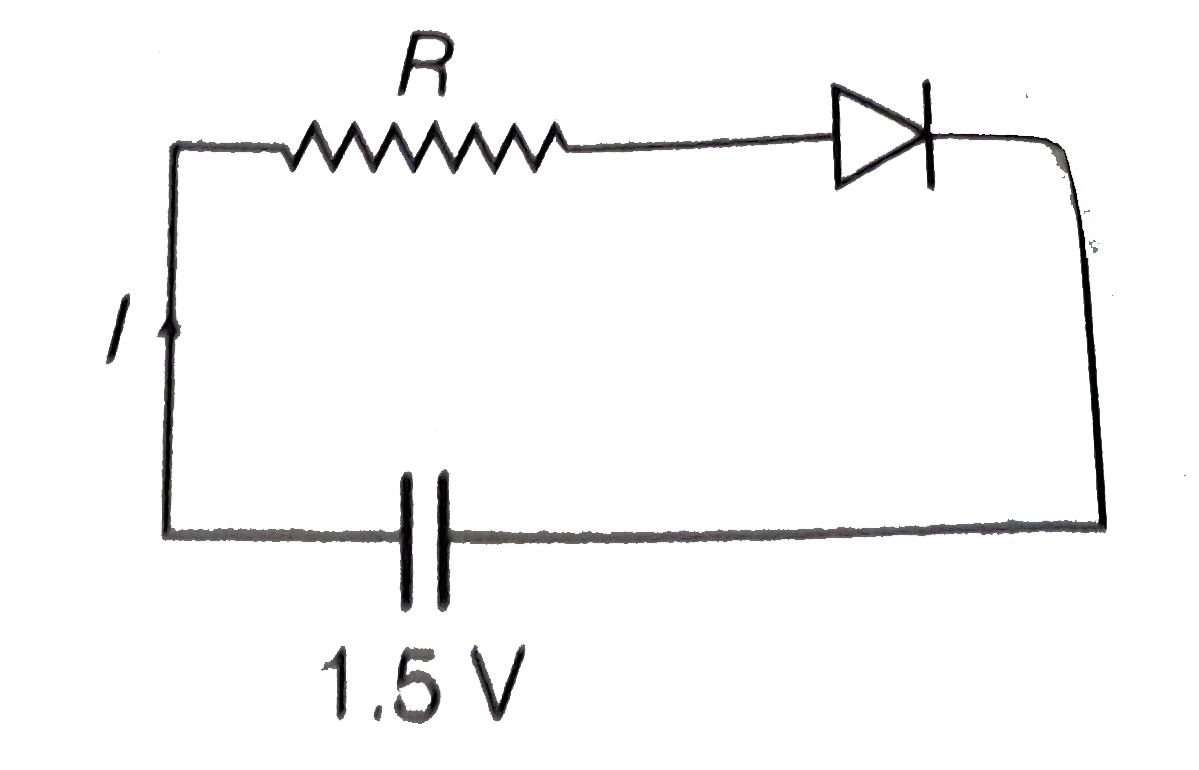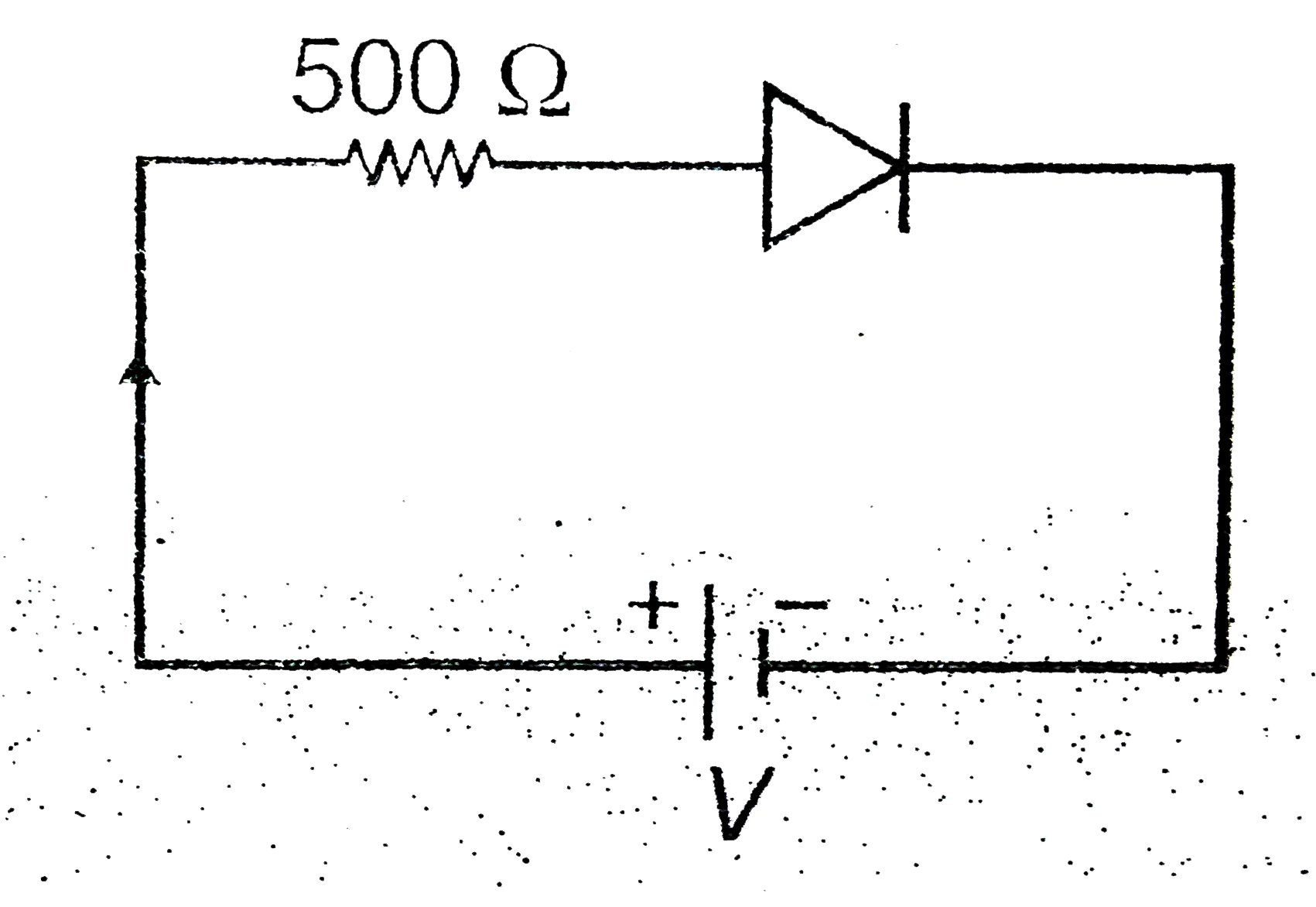A P−N junction diode can withstand currents up to 10mA. Under forward bias, The diode has a potential drop of 0.5V across it which is assumed to be independent of current. The maximum voltage of the battery used to forward bias the diode when a resistance of 200Ω is connected in series with it is
To solve the problem, we need to determine the maximum voltage of the battery used to forward bias the diode when a resistance of 200 ohms is connected in series with it. Here’s how we can approach the solution step by step:
1. Identify the Given Values:
- Maximum current (I) = 10 mA = 10×10−3 A
- Potential drop across the diode (V_D) = 0.5 V
- Resistance (R) = 200 Ω
2. Use Ohm’s Law:
- According to Ohm’s Law, the voltage across a resistor can be calculated using the formula:
V=I×R
- Here, we will calculate the voltage drop across the resistor (V_R).
3. Calculate the Voltage Drop Across the Resistor:
- Substitute the values into the formula:
VR=I×R=(10×10−3)×200
- Calculate VR:
VR=10×200×10−3=2V
4. Calculate the Total Voltage of the Battery (E):
- The total voltage of the battery (E) can be calculated by adding the voltage drop across the diode (V_D) and the voltage drop across the resistor (V_R):
E=VD+VR
- Substitute the known values:
E=0.5V+2V=2.5V
5. Conclusion:
- The maximum voltage of the battery used to forward bias the diode is 2.5 V.
Final Answer:
The maximum voltage of the battery is 2.5 V.
- Maximum current (I) = 10 mA = 10×10−3 A
- Potential drop across the diode (V_D) = 0.5 V
- Resistance (R) = 200 Ω
- According to Ohm’s Law, the voltage across a resistor can be calculated using the formula:
V=I×R
- Here, we will calculate the voltage drop across the resistor (V_R).
- Substitute the values into the formula:
VR=I×R=(10×10−3)×200
- Calculate VR:
VR=10×200×10−3=2V
- The total voltage of the battery (E) can be calculated by adding the voltage drop across the diode (V_D) and the voltage drop across the resistor (V_R):
E=VD+VR
- Substitute the known values:
E=0.5V+2V=2.5V
- The maximum voltage of the battery used to forward bias the diode is 2.5 V.
The maximum voltage of the battery is 2.5 V.
Topper's Solved these Questions
- BOOK - ALLENCHAPTER - SEMICONDUCTORSEXERCISE - Part-3(Exercise-1)84videos
SEMICONDUCTORS
- BOOK - ALLENCHAPTER - SEMICONDUCTORSEXERCISE - Part-3(Exercise-2)49videos
SEMICONDUCTORS
- BOOK - ALLENCHAPTER - PHYSICAL WORLD, UNITS AND DIMENSIONS & ERRORS IN MEASUREMENT EXERCISE - EXERCISE-IV8videos
PHYSICAL WORLD, UNITS AND DIMENSIONS & ERRORS IN MEASUREMENT
- BOOK - ALLENCHAPTER - WAVES AND OSCILLATIONSEXERCISE - Part-1(Exercise-05)[B]42videos
WAVES AND OSCILLATIONS
Similar Questions
A PN junction diode when forward biased has a drop of 0.5V which is assumed to be independent of current. The current in excess of 10mA through the diode produces large joule heating which damages the diode. If we want to use a 1.5V battery to forward bias the diode, the resistor used in series with the diode so that the maximum current does not exceed 5mA is.
 .View Solution
.View SolutionIn forward bias, the width of potential barrier in a P−N junction diode
View Solution
A diode made forward biased by a two volt battery however there is a drop of 0.5 V across the diode which is independent of current. Also a current greater then 10 mA produces large joule loss and damages diode. If diode is to be operated at 5 mA, the series resistance to be put isView SolutionA diode has potential drop of 0.5 volts in forward bias. The maximumcurrent that can be flow through diode is 10mA.Then find the resistance connected in series with diode so that set up can be connected to a battery of 1.5 volts:
View SolutionA light-emitting diode (LED) has a voltage drop of 2V across it and passes a current of 10μA, when it operates with a 6V battery with a limiting resistor R. what is the value of R ?
View SolutionThe diode used at a constant potential drop of 0.5 V at all currents and maximum power rating of 100 mW. What resistance must be connected in series diode, so that current in circuit is maximum?
 View Solution
View SolutionA light emitting diode (LED) has a voltage drop of 2V across it and passes a current of 10mA. When it operates with a 6V battery through a limiting resistor R. The value of R is
View SolutionWhen a diode is forward biased, it has a voltage drop of 0.5 V. The safe limit of current through the diode is 10 mA. If a battery of emf 1.5 V is used in the circuit, the value of minimum resistance to be connected in series with the diode so that the current does not exceed the safe limit is :
View SolutionIn V-I characteristics of a p-n junction diode, why is the current under reverse bias almost independent of the applied potential upto a critical voltage?
View SolutionIn the given circuit the voltage drop across the diode is 0.8 V, if the diode can withstand current upto maximum of 30 mA, then find the maximum voltage of the battery
 View Solution
View Solution

